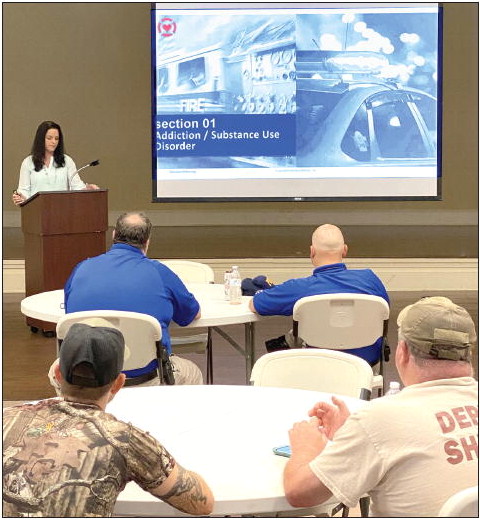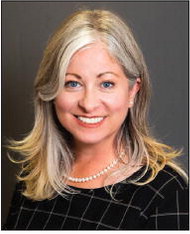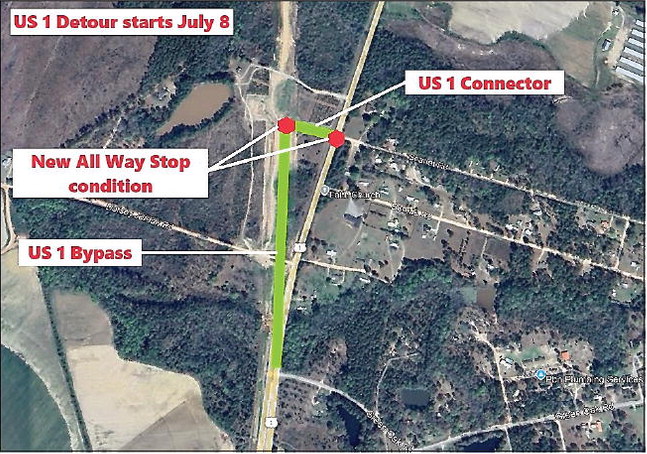First Responders Using Narcan to Save Lives


When a call came into the Toombs County 911 Center on December 16 reporting that a man had collapsed at a Lyons residence from a suspected drug overdose, a local policeman was the initial first responder to arrive on the scene.
After assessing the situation and determining the victim was unresponsive and did not have a pulse, the officer administered Narcan, an opioid overdose reversing drug. The victim did not revive, however, until another officer arrived, and a second dose of the drug was administered to counteract the effects of the overdose. The patient survived and was taken by ambulance to the local hospital.
The Lyons policemen who responded to that call in December saved a life because they were carrying Narcan and they had recently received training on how to administer the drug through a program sponsored by Leigh-Anne White & Company in Vidalia called Toombs County Prevention, Treatment, and Recovery (TC-PTR). In September, the center received a $1 million Rural Communities Opioid Response Program grant from the Federal Office of Rural Health Policy. The grant funded the formation of the TC-PTR to fight the opioid crisis in the county.
Informing the community about the facts of Substance Use Disorder and determining what action can be taken to combat the opioid crisis are priorities of the local project which has brought together a consortium of community resources to tackle the issue. One solution to the crisis is to provide to local first responders training in the use of opioid overdose reversing drugs. The first training session was held last October and sessions will continue on a quarterly basis.
“Narcan is used to stop overdose in its tracks, yet very few first continued from page
responders are trained on what it is and how it is used. Even fewer have access to this life-saving drug,” said Leigh-Anne White. “Our first responders training covers all of this and our project will also be providing all first responders in our county with their own dose of Narcan to keep with them during shifts in the event they encounter someone experiencing an overdose,” she said. The program will also include a recycling platform in which first responders can turn in their spent doses for a new dose at no cost to the departments or the community.
Counselor Elizabeth Hickman, who provides the Narcan training, said trainees have included members of the Lyons and Vidalia Police Departments, officers from the Toombs County Sheriff’s Department, and paramedics and EMTs from the Toombs-Montgomery Emergency Medical Services. In the most recent training session, also attending was a member of a local rehabilitation program that works toward helping males with Substance Use Disorder.
Narcan is expensive but worth its weight in gold since no price can be placed on a human life. It can be administered easily and quickly with minimal training, Hickman said. “The benefits of using it outweigh the negative, and, to my knowledge, there are no side effects. That is not to say someone can’t have an allergic reaction, but that is rare.”
Naloxone, sold under the brand name of Narcan and others, is a medication designed to rapidly reverse opioid overdose. It is an opioid antagonist—meaning that it binds to opioid receptors and can reverse and block the effects of other opioids. It can very quickly restore normal respiration to a person whose breathing has slowed or stopped as a result of overdosing with heroin or prescription opioid pain medications.
The training program offered by White and T.C.P.T.R. focuses on how to assess a situation where opioid overdose is suspected, how to administer the drug, and the recovery process. The lawful distribution and application of Narcan are also discussed, as well as the facts about opioid misuse, including the difference between a substance abuser and a person with Substance Use Disorder. The stigma surrounding opioids is discussed, revealing that persons with Substance Use Disorder do not always fit a familiar profile. “It could be your grandparent who got addicted to painkillers following surgery,” Hickman said. These victims often feel shame and assume the community looks down on them, and they may not seek the help they need, she said. Commenting on the assumptions within the community, she noted, “A lot of people feel like it’s a choice (to misuse drugs). There is a difference between a substance user and somebody with Substance Use Disorder. With the disorder, It is not a choice anymore, it becomes a necessity. We try and break that feeling,” she said of the center’s approach. “Leigh-Anne and her team at T.C.-P.T.R. are a benefit for the community because they fought so hard for this grant. It covers not just the individual who is suffering from Substance Use Disorder, but the indicontinued from page
ividual’s entire family.” She added, “We are not just trying to reach a specific group but the entire community and every aspect of life this epidemic touches.”
Hickman took note of the proportions of the opioid epidemic. In Georgia in 2019, medical professionals wrote enough prescriptions for every man, woman and child to receive 54 pills each. “I am not sure why we need that many prescriptions. We (the United States) are 5% of the population but consume 80% of world’s opioids.”
Globally, 36 million people misuse opioids. It is a problem that crosses all socioeconomic and ethnic groups. In 2018, 67,300
Americans died from drug overdoses, and opioids ac-
count for 70% of all over dose deaths.
A presentation used by Hickman in her classes points out that an estimated 20 million Americans have Substance Use Disorder, but another 23 million are living in recovery. She stresses that addiction is a chronic brain disease and, like other diseases, addiction should be treated medically.
Vidalia Police Commissioner Brian Scott has sent officers to the Narcan training sessions. “With the growing opioid epidemic across the nation, I think it is a benefit for us to have this program and the Narcan because, hopefully, it will save some lives. It is unusual for communities of this size to have this kind of resource.” Lt. Ray Corbett, who coordinates training for the Vidalia Police, said 100% of the sworn officers in the department have undergone the training. Lyons Police Chief Wesley Walker pointed out that the Narcan can also save the lives of first responders who come into contact with a plethora of drugs in the performance of their duties. “With all of these different drugs we deal with, having Narcan can be a lifesaver for officers. With Fentanyl, all you have to do is get it on the skin. It is extremely dangerous,” he said. During the Narcan training, first responders are told about an Ohio law enforcement officer who became exposed to Fentanyl simply by brushing the powder from his shirt. When he was overcome by the exposure, it was reported that it took multiple doses of Naloxone (Narcan) to revive him.
Walker elaborated, “Officers can come across these substances and don’t know what they are. We stress to officers that you have to take extra precautions— glove up, mask, put on safety glasses—to protect yourself. “ The Chief has no doubts that Narcan can be a lifesaver. “It proved itself in this incident,” he said of the December overdose to which his officers responded. “Narcan saved his life,” he said of the victim. “Thank goodness those officers were trained.”
Toombs-Montgomery EMS Chief Drew James, who supervises about 30 paramedics and advanced EMTs, has sent personnel to the Narcan training. Use of Narcan has been a part of the department’s protocol for years, but he believes the joint training is valuable in putting all area first responders on the same page in terms of Narcan use. He strongly advocated for all first responders to know how to administer the lifesaving drug. “Law enforcement might be there first and it gives them the tools they need.” He said the local EMS sees a high demand for use of opioid overdose reversal drugs and they “absolutely save lives.”
“For a very long time we have seen the devastating effects that substance abuse has on our community. The effects of a person suffering from Substance Use Disorder are much deeper than just that individual being affected. Family, friends, and the community all become victims to this use in one way or another,” said Captain Jordan Kight with the Toombs County Sheriff’s Office.
The Sheriff’s Office is another partner in the local Prevention, Treatment and Recovery Project. “One of the first steps taken by the Sheriff’s Office was for our staff to receive training with Narcan. Between deputies and Detention Center officers, approximately 40 staff members received this training.”
The process that put the Toombs County Prevention, Treatment and Recovery Project in place is quite a story. White, a licensed professional counselor who has been practicing in Vidalia for over five years, recognized the community’s need for an integrated approach to the opioid epidemic.
The first step was putting together a consortium from within the community— those already involved in child and family welfare and drug intervention and recovery. This experienced core group would listen to White’s ideas and provide guidance on customizing an effective program for the community. It would need to be a program that would augment and integrate what was already in place but go a step further.
White and her management team got to work contacting everyone they could think of who might be able and willing to help, from law enforcement and courts to child advocacy organizations and churches. The results were amazing. Even in the midst of the COVID-19 pandemic, individuals, organizations and agencies were positive and ready to get to work, White recalled. The most thrilling aspect of this community momentum was that members of the consortium believed so whole-heartedly in the project that they were willing to fund the grant writing. The next step was coming up with a plan that fit the community’s needs. That is where the holistic group therapy approach was born. There were many programs in the community that dealt with the welfare of children and families and with those in recovery, but there was nothing that was quite like what White and her team had in mind. The idea was to put together group therapies for the whole family: the children, the parents, the grandparents or other caregivers. “We designed a grant proposing to ultimately help kids by helping their parents. I was willing to stretch myself and go into Substance Use Disorder (SUD) and specifically opioid use disorder (OUD) therapies in order to do that,” White said. The proposed work plan includes a set of core SUD/OUD prevention, treatment and recovery activities conducted by a broad, multi-sector consortium. These activities are grounded in evidencebased or promising practice models and have been tailored to address the unique needs of Toombs County, according to White. “Substance misuse is a serious issue in many of Georgia’s rural counties and our county is no exception,” White noted, adding, “Unfortunately, many adults with substance issues are raising young children and making their children victims of the downward negative spiral of intergenerational addiction and its consequences.” Service providers are often overworked and overwhelmed as they attempt to deal with substance misuse, and budgetary constraints have resulted in inadequate resources. “This crisis is exacerbated by the fact that we do not currently have a coordinated approach to collecting and sharing substance misuse related data,” White said. Once the idea became a firm plan, White submitted a grant application to the Federal Office of Rural Health Policy. The process from program conception to grant submission happened quickly. “In February I found the grant opportunity, in March we had a meeting and put together the consortium, and six weeks later we turned the grant in.” In the middle of this flurry of activity, COVID- 19 was raging, but despite the huge obstacle imposed by a health pandemic, the program kicked off on September 1, 2020. Without this grant, Narcan would not have been on the scene as Lyons PD responded to the call, and this story very well could have ended in tragedy instead of an opportunity for recovery and growth within this community.





